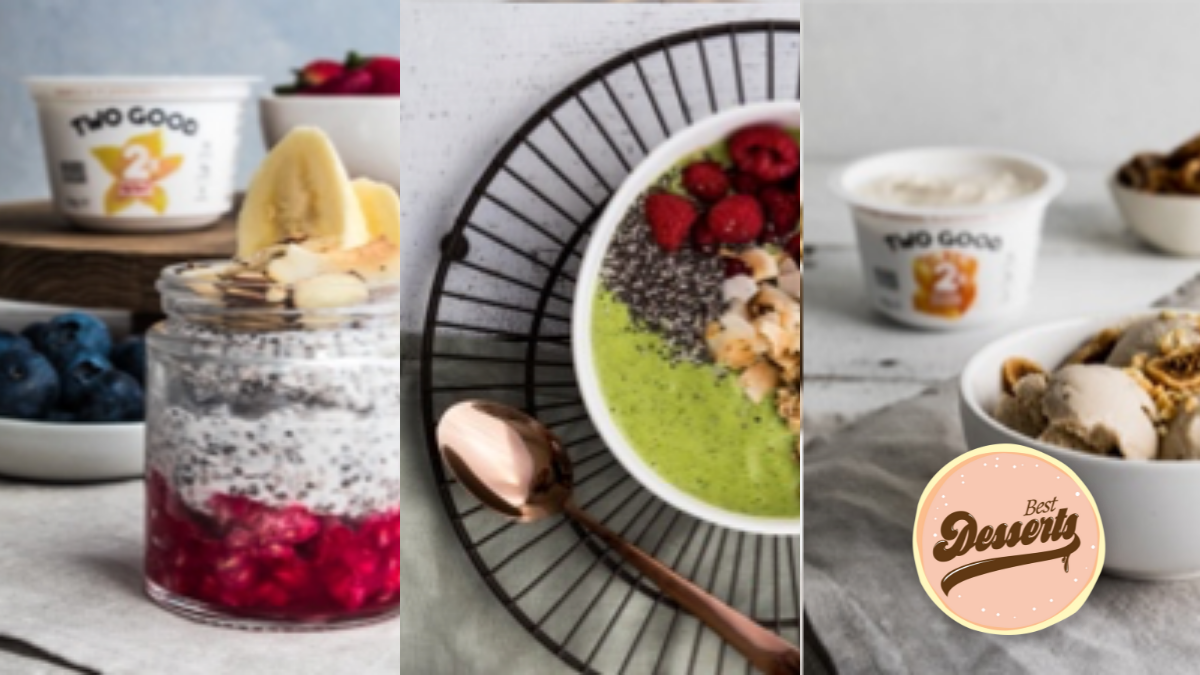Danone has partnered with Australian nutritionist, naturopath and wholefood advocate Reece Carter to provide expert advice for its low sugar ‘Two Good’ yoghurt.
Armed with a Bachelor Degree in Health Science, a Graduate Certificate in Human Nutrition and years of experience, Reece is passionate about helping Aussies make real and sustainable changes when it comes to healthier eating.
Here, Reece shares his knowledge and gives insights about how to eat for energy and health by answering four burning questions:
- How should I manage 3 pm -itis (the afternoon slump)?
- How do I read a nutrition label, and what should I look out for?
- How do I know if the food I’m eating has hidden sugars?
- How can I make my breakfast healthier?
- How should I manage 3 pm -itis i.e. the afternoon slump?
“One of the reasons some people suffer from an afternoon slump is up-and-down blood sugar levels. When we eat too many processed foods with refined carbohydrates, our blood sugar levels can spike as our bodies quickly break down these sugars. This is usually followed by a big drop in blood sugar levels, which often leaves us feeling tired and hungry.
Healthy snacking between mealtimes is an important part of keeping ‘3 pm -itis’ at bay, but not all snacks are created equal. It’s important to choose foods that have a low glycemic index to provide sustained energy, as well as contain a decent hit of protein to keep you feeling full throughout the afternoon.
A good snack option is a small handful of raw and unsalted nuts like almonds or cashews, which contain protein, healthy fats and micronutrients for optimal health. A serve of Two Good yoghurt is another excellent choice, with only two grams of naturally-occurring sugar and 11 grams of high-quality dairy protein. Low sugar, high protein snacks like Two Good flavoured yoghurts have a low glycaemic index, meaning they provide a slower and more prolonged increase in blood sugar levels, giving you sustained energy throughout the afternoon. This makes Two Good the perfect snack to keep energy levels up throughout the afternoon and prevent 3 pm -itis.
Choosing the right snacks is really important when it comes to maintaining healthy energy levels throughout the afternoon.
I’d also recommend drinking plenty of water and getting outside for a short walk in the sunshine if you can manage it, as this has been shown to give a little natural energy boost too. It doesn’t have to belong – ten minutes when you’re feeling tired will work wonders.”
- How do I read a nutrition label, and what should I look out for?
“Nutrition labels can look like hieroglyphs if you’re not used to reading them. The first thing to do is understand the difference between the two columns. The ‘per serve’ column tells you how much of a particular nutrient you will be getting in each individual serving, but the ‘per 100g’ column is more useful when comparing similar products, to try to work out which is healthier for you as an individual.
Using the ‘per 100g’ column, you are able to compare energy (kilojoules and calories), total fat and sugar for different products and choose a product that best suits your individual dietary needs. When it comes to sugar, my advice is to choose the product that has the lowest value per 100 grams, especially if you are wanting to reduce your overall daily sugar intake.
Using the nutrition panel on a 150-gram pot of Two Good mango flavoured yoghurt as an example, we can see that it contains 11 grams of protein per 100 grams, only 1.1 grams of sugar per 100 grams, and just 315 kilojoules (75 calories), making it a well-balanced snack.
Seeing important nutrition facts (like total sugar content) on the front of the packaging, as Two Good yoghurt does, is enormously helpful in guiding healthy food choices among those who aren’t yet confident in navigating the nutrition panel on the back of the pack.”
- How do I know if the food I’m eating has hidden sugars?
“Food manufacturers know that people are starting to avoid sugar in their diets, so they’re getting clever at hiding sugar in the ingredient list. When you’re choosing between food products, take a look at the ingredient list beneath the nutrition panel. Ingredients are listed in order of highest to the lowest amount in the product, so if sugar is one of the first three ingredients, it’s probably not the healthiest choice.
Other common names for sugar include dextrose, fructose, glucose, sucrose, golden syrup, honey, maple syrup, maltose, lactose, brown sugar, caster sugar, maple syrup, raw sugar, and coconut sugar. A lot of these terms overlap. For example, sucrose is a sugar that is made up of glucose and fructose; and maltose is just a sugar made up of two individual glucose molecules stuck together.
Be wary of highly processed bliss balls and snack bars that might look healthy, but are often high in sugar (and, if coconut oil is used, maybe saturated fat too) than you might expect. Similarly, those Insta-ready smoothie bowls aren’t always as healthy as they look. They often contain a lot of sugar and can be served in quite large portions. If nut butters are used, they can be much higher in calories as well.
It’s not unusual for some flavoured yoghurts to contain more than 15 grams of sugar per hundred grams, and they may also contain ‘hidden sugars’. My recommendation is to choose a yoghurt with as little sugar as possible, with Two Good being my pick of the bunch. Two Good yoghurt undergoes a filtering and straining process and is sweetened with stevia, meaning that each serve contains only two grams of naturally occurring sugar.”
- How can I make my breakfast healthier?
“Stocking your pantry and fridge with the right foods is key to a healthy breakfast. As the first meal of the day, breakfast needs to provide enough sustained energy to get us through our mornings.
Firstly, we want a source of wholegrain carbohydrates such as rolled oats or whole-grain bread to provide a slow release of energy. Next, add fresh fruit or vegetables for additional fibre and micronutrients. Lastly, we want a hit of high-quality protein (with as many essential amino acids as possible) from foods such as eggs or dairy, for example, Two Good yoghurt.
The main things you want to avoid are highly processed breakfast cereals, chocolate spreads and jams, or high-sugar yoghurts, as from a health perspective, they should only be enjoyed occasionally. It’s not unusual for some flavoured yoghurts to contain as much as 15 grams of sugar per hundred grams.
Small amounts of sugar are part of a normal healthy diet. The sugar we eat should ideally come from natural sources of sugar such as whole fruit. However, many of us eat a high amount of processed foods with added sugar. Choosing foods such as Two Good yoghurt can help us reduce our total sugar intake, whilst still enjoying great-tasting yoghurt that delivers a range of essential nutrients for good health.
So, switch your cereals for wholegrain rolled oats, use stevia and whole fruit for sweetness instead of sugar or maple syrup, and swap out high-sugar yoghurt for a low-sugar option such as Danone’s Two Good yoghurt. Two Good still contains as much protein as you would expect from a high-quality yoghurt but only two grams of naturally occurring sugar per serve.”
This general advice only and should not be substituted for medical advice. Always consult your HCP before making changes to your diet or if you have any health concerns.
Check out this Nutty for you: melt your Valentine’s heart with Mayver’s love-ly treats for early Valentine’s tips!

